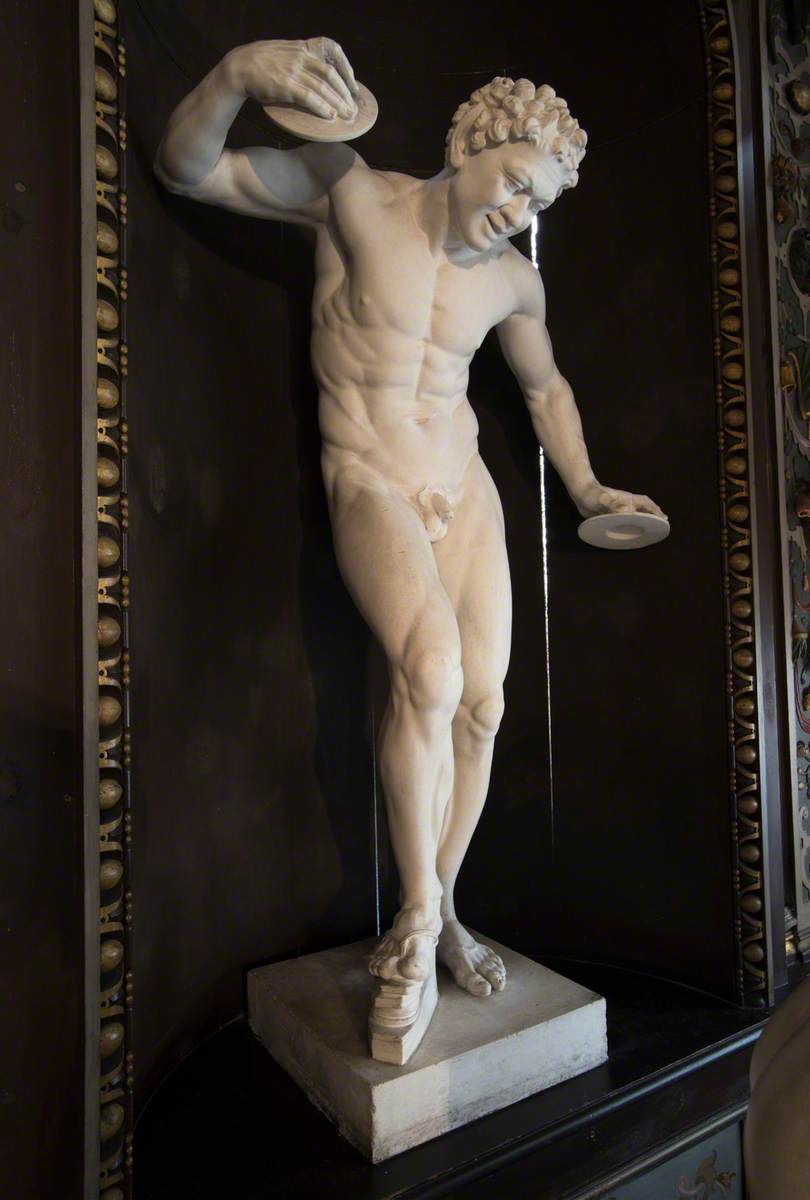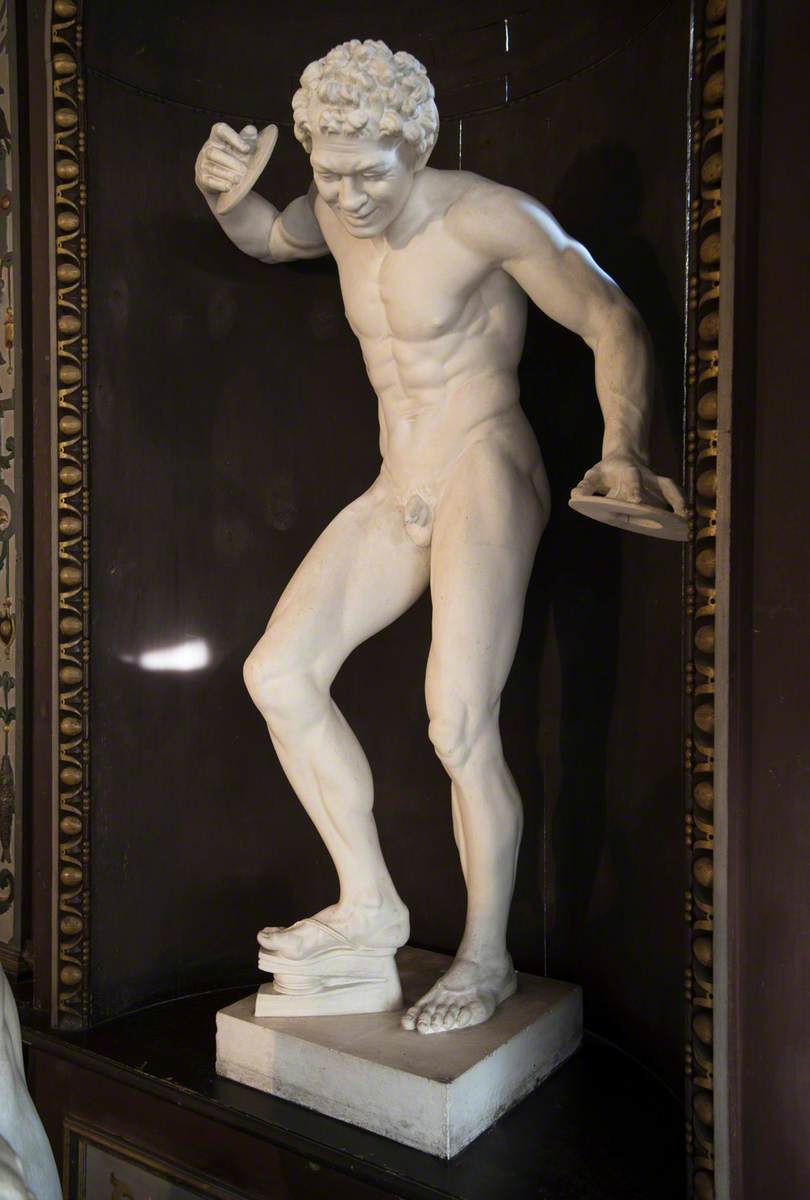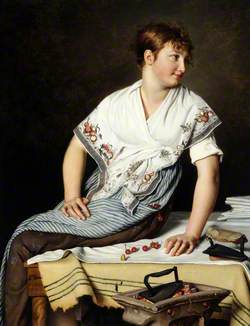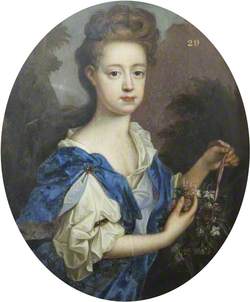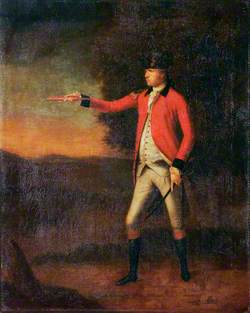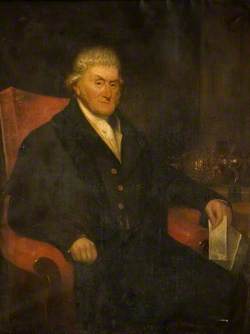How you can use this image
This image can be used for non-commercial research or private study purposes, and other UK exceptions to copyright permitted to users based in the United Kingdom under the Copyright, Designs and Patents Act 1988, as amended and revised. Any other type of use will need to be cleared with the rights holder(s).
Review the copyright credit lines that are located underneath the image, as these indicate who manages the copyright (©) within the artwork, and the photographic rights within the image.
The collection that owns the artwork may have more information on their own website about permitted uses and image licensing options.
Review our guidance pages which explain how you can reuse images, how to credit an image and how to find images in the public domain or with a Creative Commons licence available.
Notes
Add or edit a note on this artwork that only you can see. You can find notes again by going to the ‘Notes’ section of your account.
One of a pair of plaster statues from classical antiquity, this is a late eighteenth-century copy in plaster after the antique marble in the Uffizi Gallery, Florence. The faun (possibly more accurately described as a satyr) is naked, holds metal cymbala in his hands and wears a kroupezion attached to his right sandal. The kroupezion is a special shoe in the form of a percussion instrument which incorporates a metal clapper. The figure's faunlike features are visible in the tiny horns above his forehead, and in the small goat's tail at his rear. His head is bent over and he looks down to his left as he plays, absorbed in his music. The original was recorded as being in the Tribuna of the Uffizi in Florence by 1688. It was sent to Palermo in 1800 to avoid French seizure but returned to Florence by 1803.
Title
Dancing Faun
Date
1775–1799
Medium
plaster
Measurements
H 147 x W 87 x D 42 cm
Accession number
130063.1
Acquisition method
on loan from a private collection
Work type
Statue
